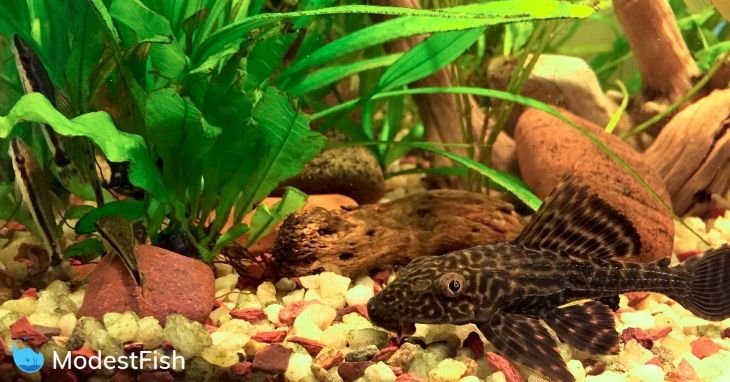Java Fern: A Perfect Aquarium Plant For Beginners
Java fern is a popular and widespread aquarium plant. It is ideal for beginners because it is robust, easy to care for and able to adapt. A peculiarity of this plant is that the roots easily stick to objects, such as stones. We explain everything you need to know about Microsorum pteropus , from care and ownership to the correct planting.
Where does the Java Fern come from?
The Java fern is a helophytic plant that comes from Asia. In nature, Microsorum pteropus grows in streams and waterfalls, mainly on rocks or attached to wood. The fern has an enormous capacity for adaptation. Depending on the location, it can grow permanently underwater or on land, on moist forest soil. Java fern leaves are elongated and taper to a point. In addition, it has the root color between dark brown and black.
What species are there?
You can buy different variants of Java ferns for your aquarium. We present the most popular ways of breeding in aquariums:
Tropica Java Fern ( Microsorum pteropus 'Tropica')
Along with the "Windelov" variant, the Java fern "Tropica" is one of the most widespread breeding forms. The name comes from the Tropica company, which patented this version of the plant. Therefore, a license must be obtained for commercial breeding. The Tropica variant reaches a height of up to 30 cm, sometimes even 50 cm. The leaves can measure up to 15 cm wide. Since this variant grows fast and can get very tall, it is only recommended for large aquariums.
Java Windelov fern ( Microsorum pteropus «Windelov»)
The Java fern with the name "Windelov" is also patented by the Tropica company. Unlike the Tropica variant, this Java fern only reaches 10-20 cm in height and is small-leaved.
Java narrow leaf fern ( Microsorum pteropus «narrow leaf»)
There are several variants of the Java fern with the addition "narrow leaf". As the name suggests, these versions have the narrowest blades and have established themselves on the market under the English name. There are also subspecies, such as the Java 'orange narrow leaf' fern, which has orange leaf tips. The “short narrow leaf” Java fern, also known as mini or petit , is very popular in nanoaquariums because it barely reaches 15 cm in height.
Java needle leaf fern ( Microsorum pteropus "needle leaf")
With a width of 5-7 mm, the 'needle leaf' variant has even narrower leaves than the 'narrow leaf'. In addition, these subspecies also differ in the length of the leaves.
Trident Java Fern ( M icrosorum pteropus “trident”)
The “trident” species is a very filigree plant that opens like antlers, similar to a trident. In terms of the width of the leaves, it resembles the "needle leaf" variant.
Our advice: before choosing a species of Java fern, keep in mind that, except for the "Tropica" variant, they all grow slowly. If you don't want to wait long for a green aquarium, buy a slightly larger Java Fern.
How is the Java Fern planted?
A large Java Fern can be planted well in the rear of the aquarium. Since most species grow relatively slowly, the Java fern is also suitable for the intermediate zone. Instead, small-leaved mini Java ferns can be planted at the front. To plant them, you have two options:
1. Planting in the background
Java fern should never be literally planted in the aquarium. This means that it should never be introduced into the soil or the substrate. Instead, use coarse gravel if you want to anchor the plant to the bottom.
A peculiarity of the Java fern is that it forms a rhizome (underground stem). This is something you should keep in mind when planting it. If you bury the rhizome of the Java fern, it can no longer breathe, it begins to rot and dies. If you want to plant it properly, at most you should fix the roots to the bottom, but leave the rhizome free.
2. Tie
Another option for planting the Java Fern is to tie it to an object. This gives you endless design possibilities in the aquarium. Also, plants grown with visible roots are very attractive.
What should I keep in mind for the care and tenure of the Java Fern?
The Java Fern is a robust and undemanding aquarium plant. It has a good adaptability and grows almost anywhere. Tenure difficulties are rare.
The water temperature can be between 20 and 28 °C, so it even supports tropical temperatures. You can place it in light or shaded areas of the aquarium.
In addition, there are no special requirements regarding water hardness, pH value or nutrients. However, the Java fern shows its most beautiful face with a good supply of nutrients and CO₂. This is reflected in the intense green of its leaves. By changing some of the water regularly, you will ensure that enough carbon dioxide is available.
Why does the plant turn black?
Black spots on Java fern leaves are a sign of an iron or potassium deficiency. If this happens, use a special fertilizer and remove the old leaves from the aquarium.
If you can rule out a nutrient deficiency as the cause, you should look for the reason for this discoloration. The algae , for example, may be responsible for the brown or black coloration of the Java fern. With the help of algaecides you can solve the problem easily and quickly.
How Does Java Fern Reproduce?
The Java fern is very easy to reproduce. You can either pull out a part of the rhizome and re-attach it to an object in the aquarium or wait until the mother plant forms daughter plants.
The daughter plants are recognized by the cuttings that form at the tips of the leaves. If you don't remove the young plants and let them grow, a lovely tiered bloom will appear over time.

Comments
Post a Comment